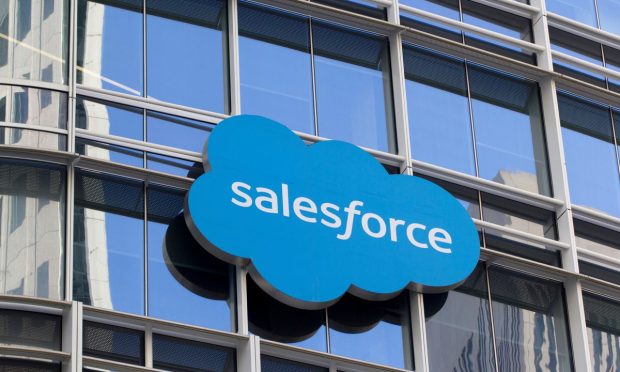Salesforce, FedEx Ink Multi-Year Logistics Partnership for eCommerce Merchants

Salesforce and FedEx have partnered to provide merchants with new tools in a bid to meet rising demand and consumer expectations for fast, free shipping and returns while keeping supply chain costs low and increasing efficiency.
The collaboration will integrate Salesforce’s Commerce Cloud and Order Management with capabilities from FedEx and its eCommerce platform subsidiary, ShopRunner. Salesforce merchants will have access to free two-day shipping and new return processes such as label-less returns, return-packaging at FedEx locations and easy drop-off, as well as access to millions of shoppers who make purchases through FedEx’s ShopRunner platform. The offering is expected to launch in the U.S. this spring, at which time pricing will be announced.
“Brands and merchants have to move quicker than ever to meet their customers’ expectations,” Claude Russ, chief operating officer of FedEx Dataworks and CEO of ShopRunner, said in a statement. “With the combined power of Salesforce and FedEx, we will provide them the speed, control and economics they need to help them exceed those expectations.”
FedEx will also give merchants and shoppers new insights into delivery speeds and potential delays, even before an order has shipped, and enhanced, real-time delivery dates and times will be available to consumers on product detail pages, in the shopping cart and throughout the delivery process.
PYMNTS research, conducted in collaboration with Cybersource, has found that over 55% of consumers have used or would use available shipping information when making a purchase decision, and 68% have used or would use free shipping on digital orders.
Read more: New Data: More Than Forty Percent of U.S. Consumers Shop Through Digital Channels … And Stay There
“We are in a world of commerce anytime and anywhere,” said Lidiane Jones, executive vice president and general manager of Salesforce Commerce Cloud, adding that pairing Salesforce’s expertise with FedEx’s logistics capabilities “lets us deliver an even faster, easier, and cost-efficient experience for our customers. Now, retailers can better meet shoppers’ two-day shipping expectations without accumulating extensive costs or sacrificing their time or brand.”
Jones told PYMNTS that although retailers will likely be the fastest adopters of the features made available by this partnership, “companies of all industries, whether B2C or B2B can benefit from this partnership — every company has a customer at the end of the day and every customer appreciates speed, efficiency and transparency.”
Stretched Supply Chains
The partnership comes as retailers face increasing supply chain headaches ahead of the holiday shopping season, with at least 375 container ships currently waiting off ports around the world. Raj Patel, senior director of 3PL industry strategy at supply chain management company Blue Yonder, told PYMNTS last month that he expects the next 12 to 18 months to continue to be a struggle for retailers who have already spent the last 18 months adapting.
“I know these words are overused, but they definitely need to be more agile and resilient, because we don’t know what the next 18 months are going to hold,” Patel said. “Is the trend going to continue? Is it going to change? What’s going to be the next thing? It’s hard to predict.”
Salesforce projected in July that costs across the retail supply chain will increase by $223 billion in the second half of 2021 because of challenges faced by logistics companies, manufacturers and stores — and that cost is expected to be borne at every level, from suppliers to consumers.
“Retailers are really starting to get scrappy and trying to get creative, but it’s much more focused on the inbound logistics and getting it to the retailer’s property than last year, where it was the last mile,” said Rob Garf, vice president and general manager of retail at Salesforce.
And looking ahead, Scott Price, president of UPS International, told the Financial Times that the crisis brought on by the pandemic will likely inflict lasting damage on globalization as retailers and manufacturers consider more regional supply chains going forward.
“A lot of companies are coming to us saying ‘where is the best place to put manufacturing and assembly?’” he said. “There’s an understanding that reliance on stretched supply chains puts you at risk.”
